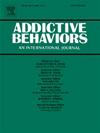寻求门诊治疗的退伍军人样本中临床评定的创伤后应激障碍和物质使用障碍症状群的网络分析。
IF 3.7
2区 医学
Q1 PSYCHOLOGY, CLINICAL
引用次数: 0
摘要
创伤后应激障碍(PTSD)和物质使用障碍(SUD)的共病表现因物质类型而异。本研究应用网络分析,通过考察PTSD与SUD之间独特关联的强度和方向,探讨诊断症状群之间的关系。网络分析使用422名诊断为PTSD/SUD共存的退伍军人作为随机临床试验的一部分,在开始PTSD心理治疗的同时接受门诊SUD治疗。对PTSD和样本中三种最常见的SUD进行了单独的网络模型估计:酒精使用障碍(AUD)、大麻使用障碍(CUD)和兴奋剂使用障碍(StUD)。创伤相关侵入和酒精相关社交障碍是连接PTSD和AUD的桥接症状群。将PTSD和CUD联系起来的症状群是创伤相关侵入和过度觉醒症状。创伤相关的认知和情绪改变以及兴奋剂相关的药理学症状是连接PTSD和StUD的桥接症状群。每个症状集群网络在创伤相关回避集群中达到高潮,表明回避可能代表了这些症状下游效应的最终结果。在所有模型中,PTSD和SUD症状群都是驱动合并症的激活源。连接PTSD/SUD的桥接症状簇也很少且相对较弱,这表明一种障碍的症状改变可能对另一种障碍的影响很小。因此,同时治疗PTSD和SUD以及针对突出症状采用个性化治疗方案可能对PTSD/SUD退伍军人最有利。本文章由计算机程序翻译,如有差异,请以英文原文为准。
A network analysis of clinician-rated posttraumatic stress disorder and substance use disorder symptom clusters in a sample of veterans seeking outpatient treatment
The presentation of comorbid post-traumatic stress disorder (PTSD) and substance use disorder (SUD) differs by substance type. The current study applied network analysis to explore the relationships between diagnostic symptom clusters by examining the strength and direction of unique associations between PTSD and SUD. Network analyses were estimated using a sample of 422 veterans diagnosed with co-occurring PTSD/SUD initiating psychotherapy for PTSD while receiving concurrent outpatient SUD treatment as part of a randomized clinical trial. Separate network models were estimated for PTSD and the three most common SUD in the sample: alcohol use disorder (AUD), cannabis use disorder (CUD) and stimulant use disorder (StUD). Trauma-related intrusions and alcohol-related social impairment were the bridging symptom clusters that connected PTSD and AUD. Symptom clusters that connected PTSD and CUD were trauma-related intrusions and hyperarousal symptoms. Trauma-related alterations in cognition and mood and stimulant-related pharmacological symptoms were the bridging symptom clusters that connected PTSD and StUD. Each network of symptom clusters culminated in the trauma-related avoidance cluster, suggesting avoidance may represent a final outcome of the downstream effects of these symptoms. Across models, PTSD and SUD symptom clusters both served as sources of activation driving the comorbidity. There were also few and relatively weak bridging symptom clusters that connected PTSD/SUD, suggesting symptom change in one disorder may have minimal effect on the other disorder. Therefore, simultaneously treating PTSD and SUD as well as employing individualized treatment planning to target prominent symptoms may be most beneficial for veterans with PTSD/SUD.
求助全文
通过发布文献求助,成功后即可免费获取论文全文。
去求助
来源期刊

Addictive behaviors
医学-药物滥用
CiteScore
8.40
自引率
4.50%
发文量
283
审稿时长
46 days
期刊介绍:
Addictive Behaviors is an international peer-reviewed journal publishing high quality human research on addictive behaviors and disorders since 1975. The journal accepts submissions of full-length papers and short communications on substance-related addictions such as the abuse of alcohol, drugs and nicotine, and behavioral addictions involving gambling and technology. We primarily publish behavioral and psychosocial research but our articles span the fields of psychology, sociology, psychiatry, epidemiology, social policy, medicine, pharmacology and neuroscience. While theoretical orientations are diverse, the emphasis of the journal is primarily empirical. That is, sound experimental design combined with valid, reliable assessment and evaluation procedures are a requisite for acceptance. However, innovative and empirically oriented case studies that might encourage new lines of inquiry are accepted as well. Studies that clearly contribute to current knowledge of etiology, prevention, social policy or treatment are given priority. Scholarly commentaries on topical issues, systematic reviews, and mini reviews are encouraged. We especially welcome multimedia papers that incorporate video or audio components to better display methodology or findings.
Studies can also be submitted to Addictive Behaviors? companion title, the open access journal Addictive Behaviors Reports, which has a particular interest in ''non-traditional'', innovative and empirically-oriented research such as negative/null data papers, replication studies, case reports on novel treatments, and cross-cultural research.
 求助内容:
求助内容: 应助结果提醒方式:
应助结果提醒方式:


